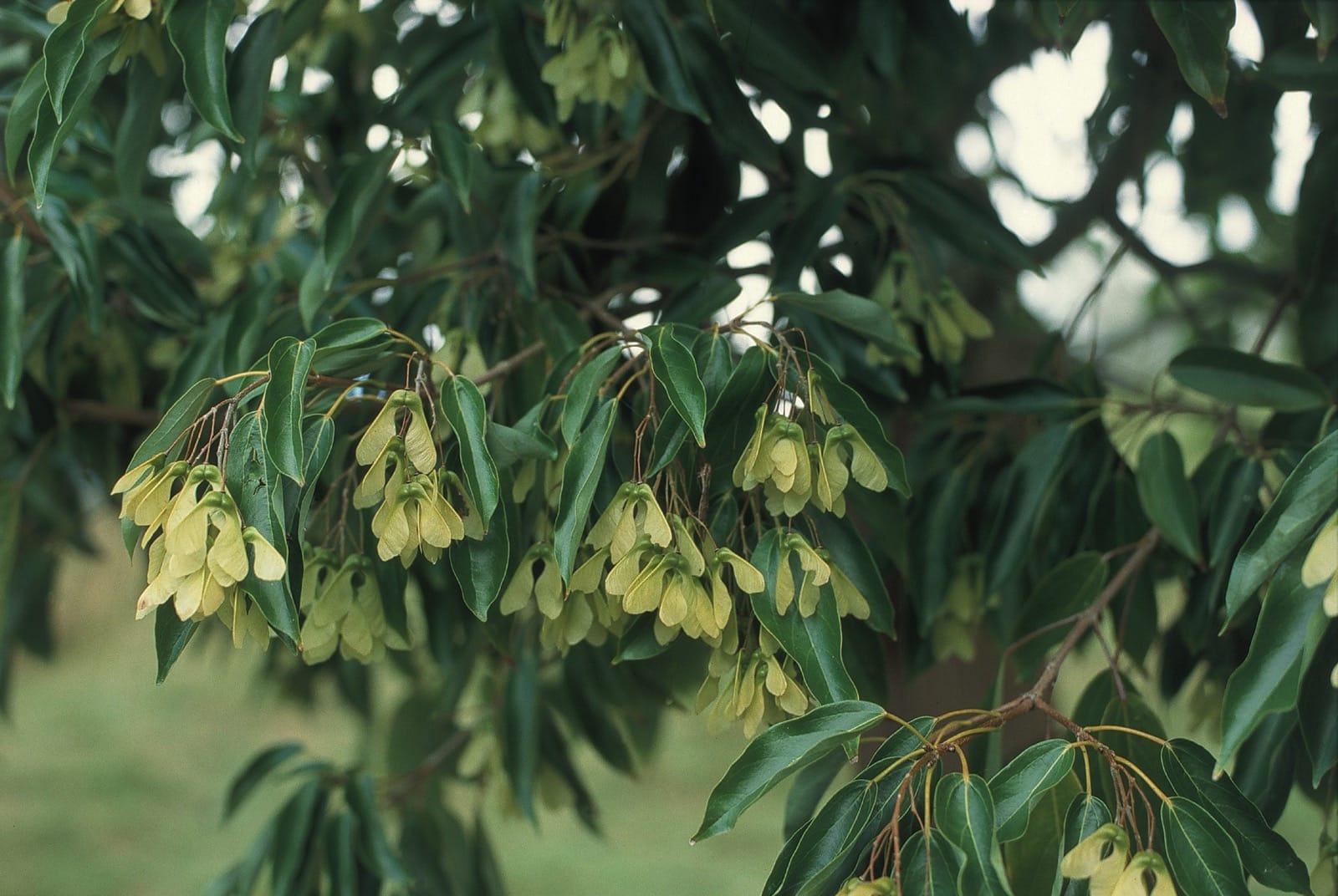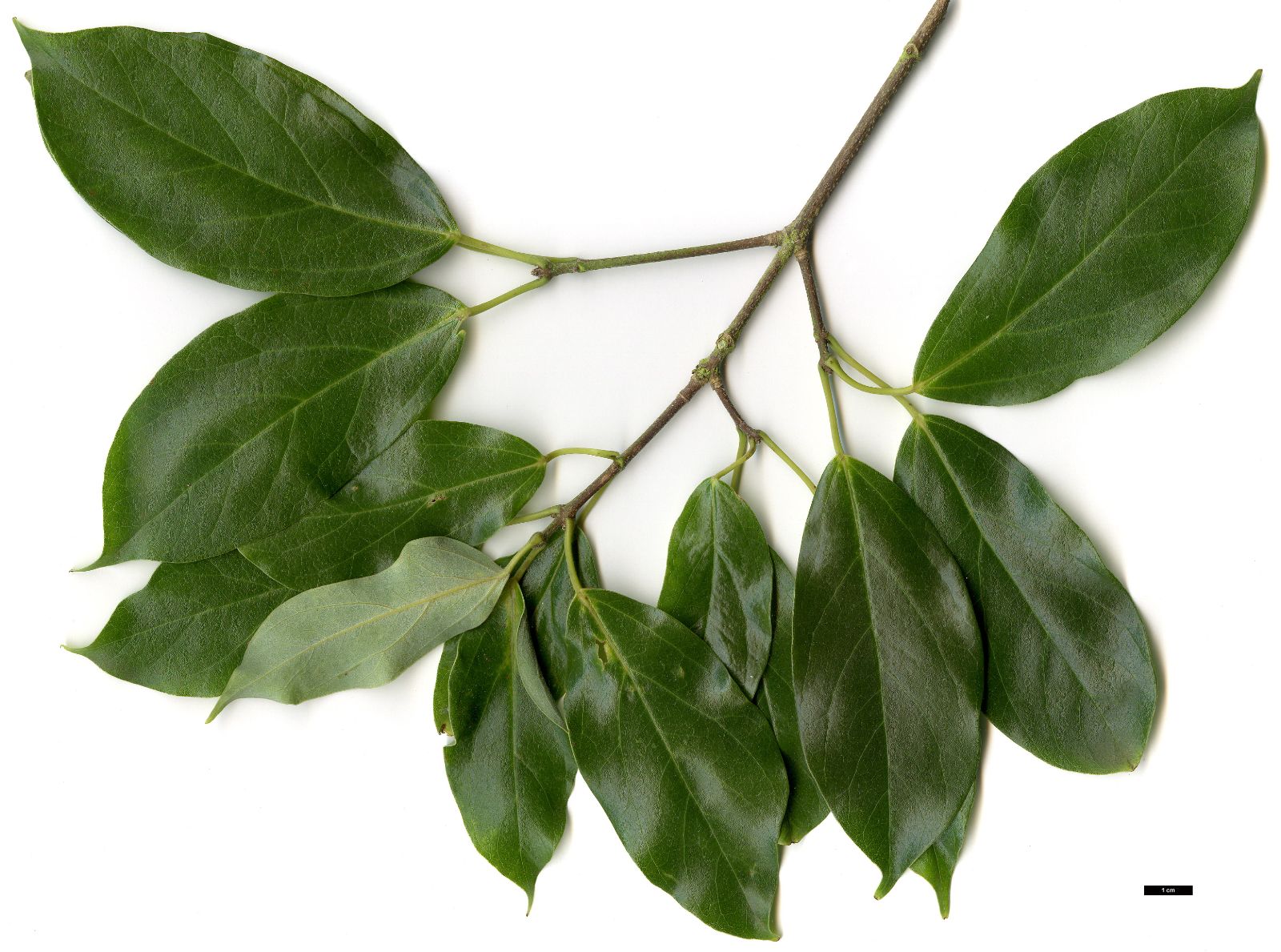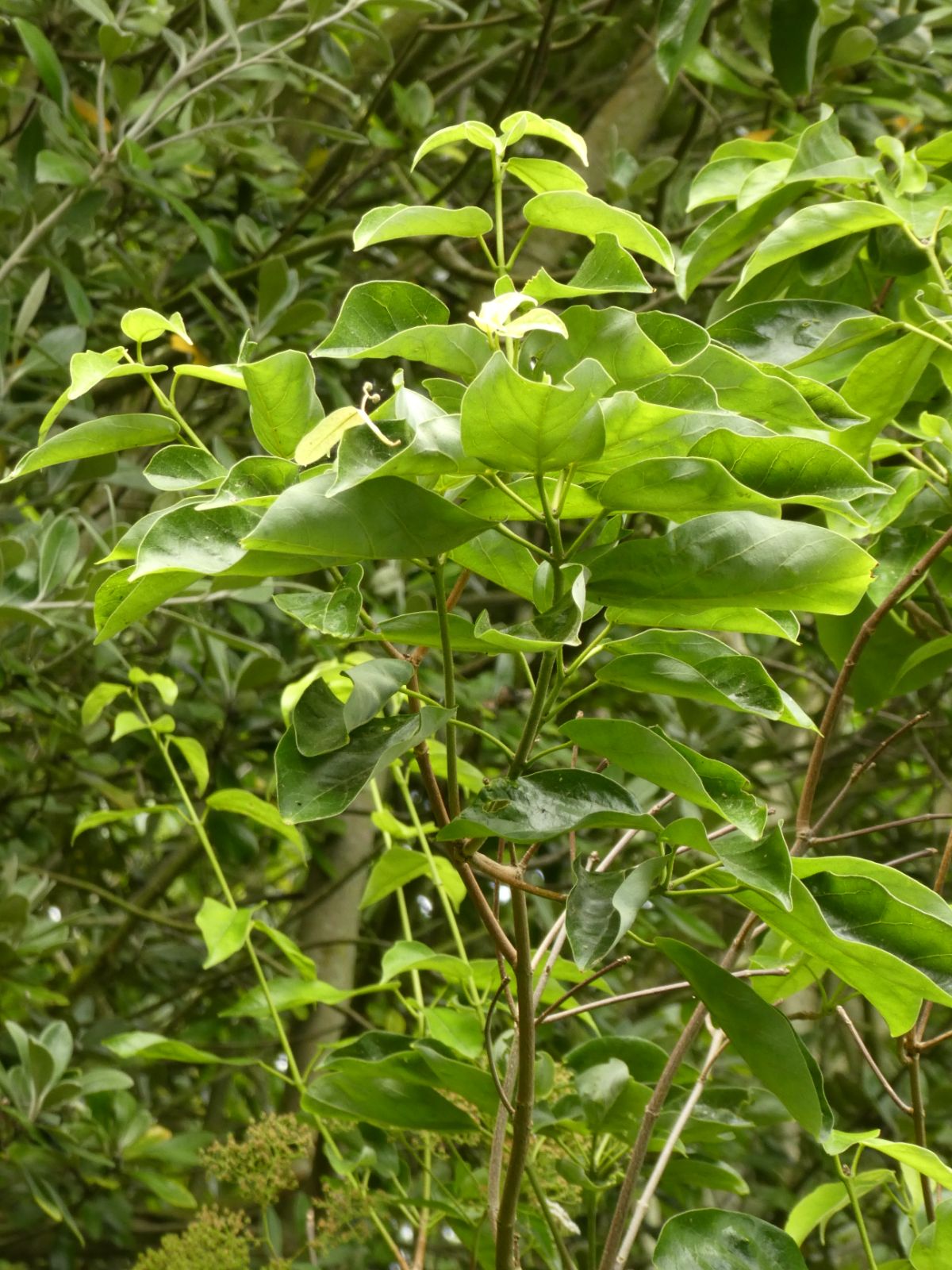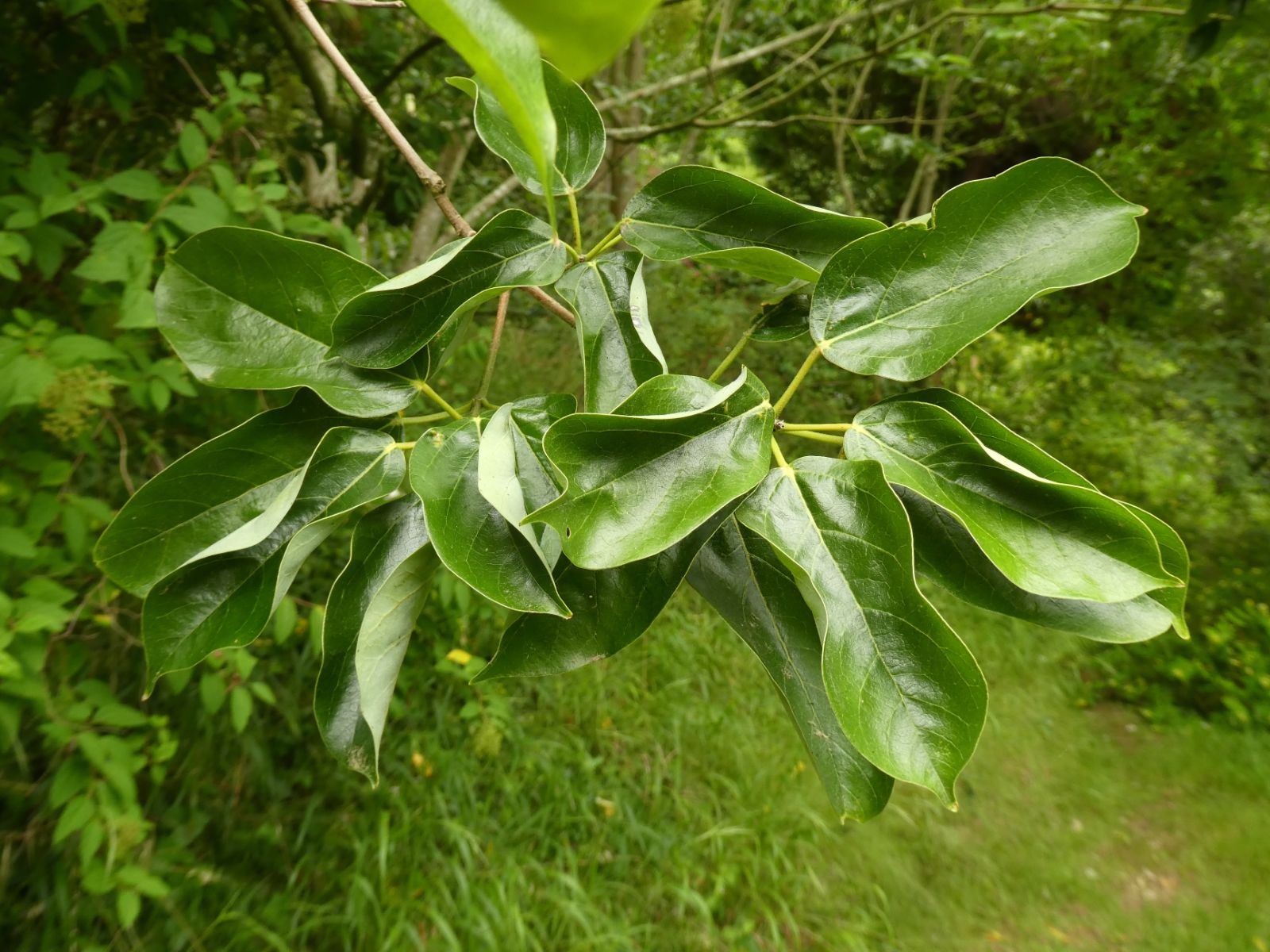Acer coriaceifolium
Sponsor
Kindly sponsored by
a member of the International Dendrology Society
Credits
Article from New Trees by John Grimshaw & Ross Bayton
Recommended citation
'Acer coriaceifolium' from the website Trees and Shrubs Online (treesandshrubsonline.
Genus
- Acer
- Sect. Pentaphylla, Ser. Trifida
Synonyms
- Acer cinnamomifolium Hayata
Other taxa in genus
- Acer acuminatum
- Acer amplum
- Acer argutum
- Acer barbinerve
- Acer buergerianum
- Acer caesium
- Acer calcaratum
- Acer campbellii
- Acer campestre
- Acer 'Candy Stripe'
- Acer capillipes
- Acer cappadocicum
- Acer carpinifolium
- Acer 'Cascade'
- Acer caudatum
- Acer ceriferum
- Acer chapaense
- Acer chienii
- Acer circinatum
- Acer cissifolium
- Acer × conspicuum
- Acer cordatum
- Acer × coriaceum
- Acer crataegifolium
- Acer davidii
- Acer diabolicum
- Acer distylum
- Acer divergens
- Acer duplicatoserratum
- Acer elegantulum
- Acer erianthum
- Acer 'Esk Flamingo'
- Acer fargesii
- Acer fenzelianum
- Acer flabellatum
- Acer forrestii
- Acer franchetii
- Acer × freemanii
- Acer fulvescens
- Acer 'Gimborn'
- Acer ginnala
- Acer glabrum
- Acer 'Gold Coin'
- Acer granatense
- Acer grandidentatum
- Acer griseum
- Acer heldreichii
- Acer henryi
- Acer × hillieri
- Acer hookeri
- Acer hyrcanum
- Acer japonicum
- Acer kawakamii
- Acer komarovii
- Acer laevigatum
- Acer laurinum
- Acer laxiflorum
- Acer lobelii
- Acer longipes
- Acer macrophyllum
- Acer mandshuricum
- Acer maximowiczianum
- Acer maximowiczii
- Acer metcalfii
- Acer miaotaiense
- Acer micranthum
- Acer 'Mindavi'
- Acer 'Minorient'
- Acer miyabei
- Acer miyabei × campestre
- Acer monspessulanum
- Acer morifolium
- Acer 'Mozart'
- Acer oblongum
- Acer obtusifolium
- Acer okamotoanum
- Acer oliverianum
- Acer opalus
- Acer orientale
- Acer palmatum
- Acer papilio
- Acer pauciflorum
- Acer pectinatum
- Acer pensylvanicum
- Acer pentaphyllum
- Acer pentapotamicum
- Acer pictum
- Acer pilosum
- Acer pinnatinervium
- Acer platanoides
- Acer platanoides × amplum
- Acer platanoides × truncatum
- Acer × pseudoheldreichii
- Acer pseudoplatanus
- Acer pseudosieboldianum
- Acer pubinerve
- Acer pycnanthum
- Acer rubescens
- Acer rubrum
- Acer rufinerve
- Acer saccharinum
- Acer saccharum
- Acer sempervirens
- Acer 'Serpentine'
- Acer serrulatum
- Acer shenkanense
- Acer sieboldianum
- Acer sikkimense
- Acer 'Silver Cardinal'
- Acer 'Silver Ghost'
- Acer sinense
- Acer sinopurpurascens
- Acer spicatum
- Acer stachyophyllum
- Acer taronense
- Acer tataricum
- Acer tegmentosum
- Acer tenellum
- Acer tetramerum
- Acer tibetense
- Acer tonkinense
- Acer triflorum
- Acer truncatum
- Acer tschonoskii
- Acer turkestanicum
- Acer tutcheri
- Acer ukurunduense
- Acer velutinum
- Acer wardii
- Acer 'White Tigress'
- Acer wilsonii
- Acer × zoeschense
Tree to 15 m, though often a shrub in cultivation. Bark grey to blackish brown. Branchlets pubescent to tomentose. Leaves evergreen, leathery, 7–12 × 2.5–5 cm, entire, ovate to oblong or rarely lanceolate, upper surface dark green and glabrous, lower surface pale green and tomentose, three to six lateral veins on each side of the midrib, margins entire, apex apiculate; petiole 1.5–3 cm long, reddish and tomentose. Inflorescence terminal, corymbose, tomentose. Flowers 5-merous; sepals pale green and oblong, petals light yellow and obovate, stamens eight, inserted inside disc. Samaras 2.8–3.5 cm long, yellowish brown when mature, wings spreading obtusely or acutely. Flowering March, fruiting August (China). Van Gelderen et al. 1994, van Gelderen & van Gelderen 1999, Xu et al. 2008. Distribution CHINA: southern Anhui, Fujian, Guangdong, northern Guangxi, Guizhou, Hubei, Hunan, Jiangsu, Jiangxi, southeast Sichuan, Zhejiang. Habitat Forest between 1500 and 2500 m asl. USDA Hardiness Zone 8–9. Conservation status Not evaluated. Illustration NT83. Cross-reference K73.
Acer coriaceifolium is another evergreen entire-leaved maple with a marginal existence in Europe, surviving in mild coastal gardens and greenhouse collections – although one sapling at Furzey Gardens, Hampshire survived –12 ºC in 2006 (Johnson 2007). Seed from the Shanghai Botanic Garden in 1983 (distributed as A. cinnamomifolium) was the first recorded introduction to the West (van Gelderen et al. 1994). It is not known if there have been later reintroductions; its altitude range suggests that collections from its highest locations would be useful. There are trees up to 4 m tall at Tregrehan, but no larger specimens have been located. In North America it has been distributed by Heronswood Nursery, and a young plant obtained from there in 2000 by the JC Raulston Arboretum is doing remarkably well, surviving at least –10 ºC most winters to reach 1.5 m by May 2006. The leaves are sometimes damaged, and the plant may become partly defoliated, but it is surprisingly happy in the North Carolina Piedmont area (as also are A. fabri and A. laevigatum) (T. Lasseigne, pers. comm. 2007). In North Carolina the buds break in very early spring (T. Alderton, pers. comm. 2007), which may be a problem where late frosts are regular. The foliage is a dull pale green (darker when grown in shade), with distinct tomentum below when young, although this seems to disappear as the leaf matures, to leave a grey underside.







